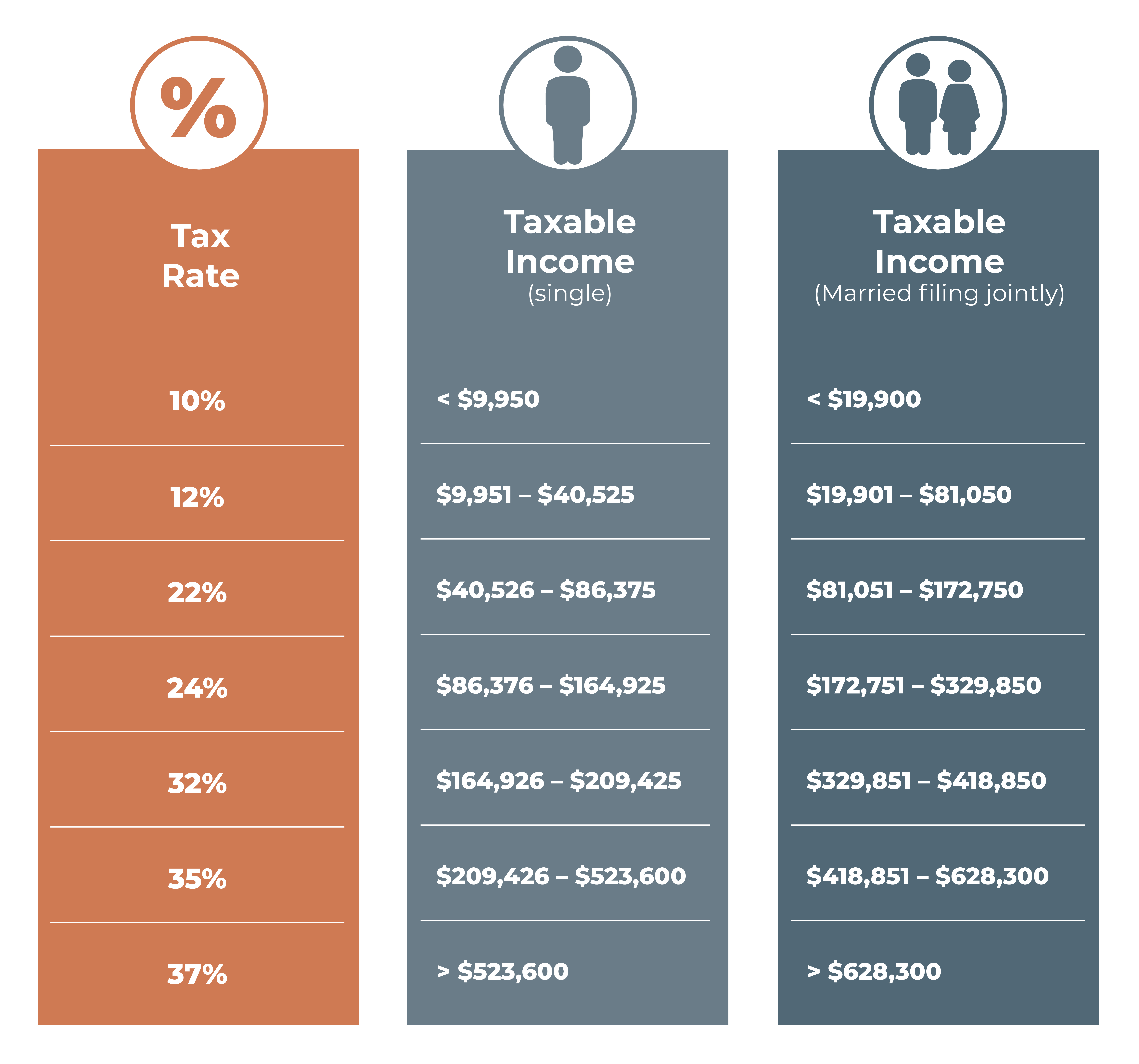By Jamie Cox
Understanding tax brackets is essential to successful tax planning. Tax planning is an important part of what we do; I want to help minimize your taxes. However, your effective tax rate, or what you actually pay in taxes, is almost always going to be lower than the number on your income tax bracket.
The federal income tax is progressive — your tax rate increases along with your income. Essentially, the first $100,000 you earn will be taxed differently than the next $100,000. Of course, tax brackets aren’t conveniently packaged in $100,000 intervals. Here’s how it works using 2021 federal income tax brackets.

So, what does that mean? Consider these examples.

Now that you’ve seen how tax brackets work in practice, I want to talk about your marginal tax rate. Your marginal tax rate is the amount of tax you pay on every additional dollar you earn.
Let’s say you’re single and you go from making $209,000 to $210,000. That $1,000 increase takes you from the 32 percent tax bracket up to the 35 percent tax bracket. However, you’re only paying that 35 percent tax on $575 dollars, which isn’t that significant. But that’s when you only take tax brackets into account.
The tax you pay in real life can be impacted by deductions and credits, as well. These tax benefits can bring your effective tax rate down even further than the numbers we calculated based on brackets alone. And this is where marginal tax becomes important. Many of these tax benefits phase out once your taxable income hits a certain level. If your income exceeds a certain amount, you may not be eligible at all. In other words, the effective marginal tax rate may increase as you earn more income, therefore decreasing your incentive, after-tax, to earn more beyond a certain amount.
The goal of these phase-outs is to increase the effective tax rate paid by wealthier individuals. But your effective tax rate isn’t the only thing impacted by your income level. For instance, if your income increases above a certain amount, your Medicare premiums increase.
These are all factors we consider when engaging in tax planning for clients.
The examples used are hypothetical and are for illustrative purposes only. Your results may vary.
LPL Financial and Harris Financial Group do not provide tax advice. This information is not intended to be a substitute for specific individualized tax advice. We suggest that you discuss your specific tax issues with a qualified tax advisor.
